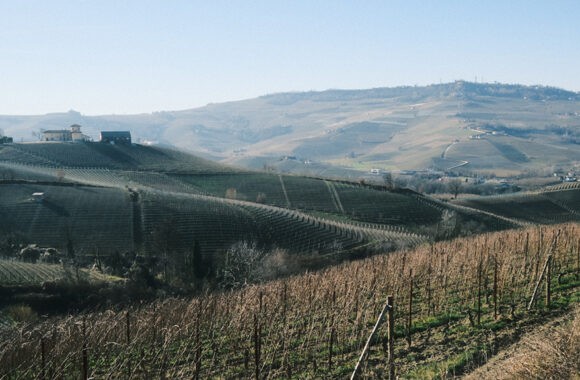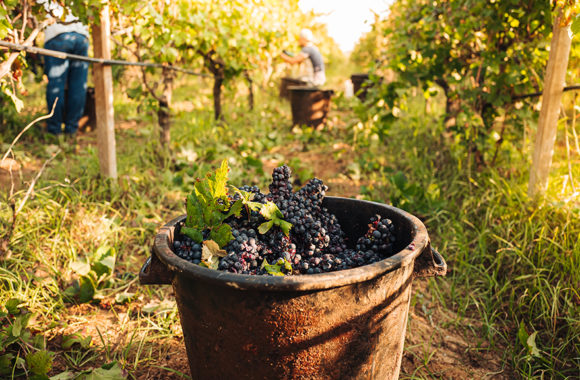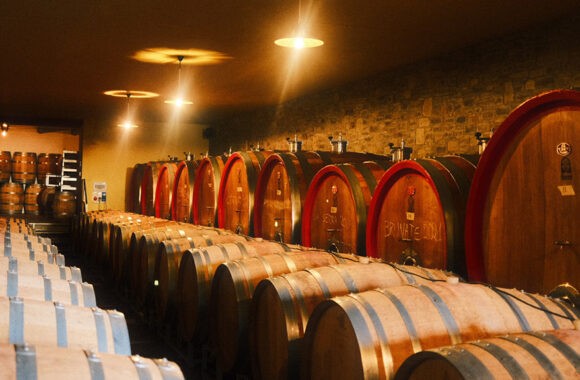
An Introduction To: Argentina
· Maggie Macpherson Maggie Macpherson on
Jeroboams Education is a new series on our blog providing you with the lowdown on the most iconic wine producing regions of the world. Led by our super buying team, Peter Mitchell MW and Maggie MacPherson will introduce you to the key facts and a little history of all the regions you recognise but perhaps don’t know too well. To help really further your education, why not drink along? Browse our Argentina selection.
Introduction
Salt and vinegar, Fish and Chips, Peas and Carrots (Forrest Gump reference) and Steak and Malbec are all well-known partners in crime. Although Steak and Malbec has only really become a ’thing’ in recent years and we have Argentina to thank for it. Argentina is a fiery country of tango and football, fuelled by a love delicious food such as empanadas and asado and of course some delicious wines. With the Andes providing a sensational backdrop to its vineyard areas it truly is one of the most beautiful countries to produce wine in.
History
The production and consumption of wines in Argentina goes back to the beginning of the 16th century, when the first specimens of Vitis vinifera were brought to America by Spanish colonisers. A familiar story here with Catholic priests cultivating vineyards near their monasteries to ensure there was wine readily available to celebrate Holy Mass. This artisanal style of wine making continued for almost three centuries after the Spanish missionaries planted the first vines, and it was only in the 19th century when European immigrants brought with them industrial winemaking techniques and practices that the modern Argentinian wine industry was born. The legendary Michel Aimé Pouget was one of these immigrants who was hired as a viticulture specialist and went on to start the first agricultural school and vine nursery in Argentina in Mendoza and he introduced French grape varieties including Cabernet Sauvignon, Merlot, Pinot Noir and Malbec.
A major factor which facilitated the development of the winemaking industry was the arrival of the Transandine Railway in 1885. The railway allowed wines to be exported from Mendoza to the bustling capital of Buenos Aires. This increased domestic demand led to a rapid expansion of vineyard plantings between 1880 to 1900. After a brief pause during the financial crisis in the 1930s, the wine industry continued to flourish with land under vine doubling between 1950 and 1970, and in 1977 there were 350,680 hectares of vines planted. All was looking good given domestic wine consumption was also at an all-time high at 92 litres per capita in 1970. However, at the beginning of the 80s a combination of social and economic crises had a knock-on impact on the wine industry causing grape and wine prices to drop by 80% between 1979 and 1982. With domestic consumption decreasing to 76 litres per capita producers were left with an excess of cheap table wine.
Despite Argentina remaining within the top 10 wine producers in the world, very few bottles made it overseas. So, producers began to investigate this untapped export market when the domestic consumption continued to fall. Argentinian winemakers took inspiration from their neighbours in Chile who were already enjoying global success through contracting international winemakers to produce wines more suited to the international expectations. Nicolás Catena was an early adopter of the international winemakers hiring US-born winemaker Paul Hobbs to transform his production of Chardonnay. This improved winemaking coincided with the crash of the Peso against the US dollar which, although negative for the Argentine economy, made Argentine wines much more competitive on the export market. Enter the reign of Malbec. The Malbec mania started in the late 90s and carried on growing until it became Argentina’s most exported wine growing export volumes from 55,000 hectolitres in 1990 to 492,000 hectolitres in 2000. This internationally loved wine has also helped to boost Argentina’s tourism with Mendoza’s wineries receiving over 1.1 million visitors in 2018, 36% of whom were foreigners.
Climate
The climate in most of the Argentina wine regions is semi-arid and desert-like, with very little rainfall. Understandably given the geography of Argentina the diurnal range can be huge, with the warmest regions, such as San Juan and La Rioja, reaching daytime temperatures of over 40c, and dropping all the way down to 10c in the night. Mendoza and Salta are more temperate, with lower average temperatures and with night temperatures as low as 3c, although frosts are rare. Most of the sparse rainfall takes place during the summer, and the late summer months sometimes see storms of hail that destroy part of the vineyards.
Grape Varieties
The Criolla Family
Argentina has some unique varietals to offer. The Criollas are the name of a family of native grapes of the Argentine territory. Since 2008, using DNA studies, engineers have managed to unravel at least eighteen indigenous varieties of Argentina. Torrontés is the most famous and important criolla and there are actually three variations – Riojano, Mendocino and Sanjuanino. The research into the Criollas is really just in its infancy, and as such Argentina is still best known for recognisable international varieties.
- Bonarda is the second most cultivated red variety and one of the more traditional having been introduced to Argentina in the late 19th century. Of the total cultivated in Argentina, 60% is located in the warm area East of Mendoza. It produces wines deep in colour with raspberry aromas and subtle aniseed notes. When it is used in blends, it provides intensity and fruity notes.
- Malbec is the flagship variety of Argentina and since 2011 it has been the most cultivated variety in the country. Noted for its intense dark colour and fruit explosion of cherries, strawberries, plums, raisins and black pepper.
- Torrontés is only found in Argentina. There are three variants of Torrontés: Mendocino and Sanjuanino, which are lighter and fresher, and Riojano, which is the most cultivated. It is a light-yellow colour with green hues and aromas of rose, jasmine and geranium.
The Sub-regions of Argentina
Set in wide valleys and on sloping plains, the wine regions of Argentina form a strip at the foot of the Andes mountain range, although in recent years, producers have pushed out to the West, into higher altitudes, and to the South and East, searching for cooler microclimates or the cooling influence from the Ocean.
The North
The northern wine regions cover nearly 15,000 acres and includes the highest vineyard in Argentina in the town of Uquía (Jujuy), sitting on top of a disused mine at 3329 metres above sea level, and its actually the highest vineyard in the world. The climate is arid and dry, with very high average temperatures and the soils are generally sandy-loam or sandy with a high proportion of fine sand that favours drainage.
- Jujuy is in the extreme northwest with vineyards planted high up in the mountains, mainly in the area of the Valles Templados near the provincial capital, and in the Quebrada de Humahuaca, declared a World Heritage site by UNESCO.
- Salta vineyards can be found mainly in the Calchaquí Valleys, a system of interconnecting valleys stretching 270 km, that it shares with the provinces of Catamarca and Tucumán.
- Tucuman is the second smallest province, and also anchored in the Calchaquí Valleys.
- Catamarca is centred arounda succession of valleys located in the west. The word Catamarca comes from the Quechua language and means “fortress on the slope”.
Cuyo
Arguably Argentina’s most famous region Cuyo means “desert country” in the Huarpe Millcayac language. This is an arid and fertile region at the foot of the Andes mountain range, which includes the provinces of La Rioja, San Juan and Mendoza. With 464,638 acres of vineyards, Cuyo boasts 95% of the total area planted in Argentina. Winters are cold and summers hot and dry, with the Andes providing a source of water for the necessary irrigation.
- La Rioja is based in the Famatina Valleys, to the west of the territory, between the Sierras de Velasco and Famatina. The valleys are characterised by a hot climate, mild nights and severe drought. Torrontés Riojano, one of the native varieties from the family of Criollas grapes thrives here.
- San Juan is the second most important wine province in Argentina after Mendoza, with 17% of the total area planted in the country. The soils are usually very varied, although mainly alluvial with sand and clay. Unusually, the predominant variety is Syrah.
- Mendoza is home to 75% of the total vineyards in Argentina and the largest number of wineries. It is also the capital of Malbec with 20% of the total area of Malbec planted in Argentina found here. Mendoza can be divided into five large sub-regions;
- Valle de Uco (Tunuyán, Tupungato and San Carlos)
- Primera Zona (Luján de Cuyo and Maipú)
- The Northern oasis (Lavalle and Las Heras)
- The East (San Martín, Rivadavia, Junín, Santa Rosa and La Paz)
- The South (San Rafael, Malargüe and General Alvear)
Patagonia & Atlantic Region
Not the largest region in Argentina, accounting for only 2% of the total planted area in Argentina, however its fast becoming the most exciting, producing cool climate wines of elegance. In recent years, producers have pushed the wine frontier planting in Chubut, and in Chapadmalal, (Buenos Aires). This is a cooler area of Argentina with cool climate varieties such as Pinot Noir thriving, although Malbec is still the most cultivated variety.
- La Pampa is in the centre of Argentina and is defined by rolling plains segmented by valleys in the form of fans, with significant slope variations.
- Neuquen has vineyards at a relatively low altitude of 270m and has a hot climate with very cold nights and very little rain.
- Rio Negro is a varied region with vineyards starting in the higher valleys at an altitude of 370m right down to 0 with vineyards planted along the Atlantic coast. In the West, the climate is mostly continental and dry, with low rainfall and low relative humidity. While in the East temperatures are moderated by the Atlantic Ocean.
- Chubut is in southern Patagonia and boasts the southernmost vineyard in the world. The extreme cold, strong winds and frost pressures throughout the season produce a super fresh style of wine with excellent acidity.
- Buenos Aires covers the eastern area of Argentina with Chapadmalal representing the easternmost point for vine cultivation in Argentina. It is composed of mountain ranges and low-lying undulating plains, a humid climate and plenty of wind.
Market
Chile dominates South American wine exports however Argentina makes almost five times as much wine, and has been catching up fast on export markets, especially in the US. In 1993 there were only 10 exporting wineries and exports were value was $24million and volume was 25 million litres. In fact, exports only accounted for 2% of the wine industry in Argentina. However, by 2019 there are now 521 exporting wineries accounting for $807million in value and 313.8million litres in volume and has grown to 25% of the industry. It’s worth noting that the value has far outstripped the volume which highlights Argentina’s enviable position as a premium wine exporter.
Vintages
2008: Reds fared better than whites in this wet vintage.
2009: A fantastic vintage, particularly in Mendoza.
2010: A cooler ripening season than average but quality not as good as 2009.
2011: A cool and damp year with frost and hail causing issues as well.
2012: Lower yields producing wines of great concentration and structure, wines should age well.
2013: A good vintage across the board with cool period during harvest.
2014: Frost and rain affected the concentration of wines, the best show great aromatics.
2015: Warm and humid in Mendoza causing rot issues but with selection some decent wines made.
2016: Rains and hail affected volumes in this super cool vintage which produced mixed quality wines.
2017: Higher volumes than 2016, but still short on average. However excellent quality across the board with slightly lower alcohols.
2018: A classic year for Mendoza Malbec with the drought helping to concentrate flavours despite volumes increasing.
2019: A slightly smaller vintage but excellent quality with modest alcohols and fresh acidity.







